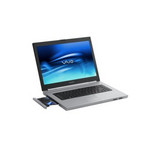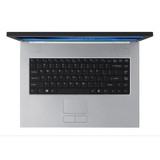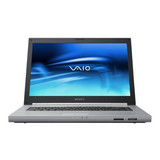Sony Vaio VGN-N230E
Specifications

Price comparison
Average of 1 scores (from 1 reviews)
Reviews for the Sony Vaio VGN-N230E
Source: Comp Reviews
 Archive.org version
Archive.org versionAt first look, one might mistake the new Sony VAIO VGN-N230E/W notebook for an Apple MacBook. Both systems are styled entirely around a white case and keyboard layout. This does give it a very unique look, but it also means that it is fairly difficult to keep clean. The white keyboard especially tends to show dirt and grim over time. The surprisingly part of the VGN-N230 is the specifications. Since Sony in the past has had a cost associated with their product name, the systems tend to be a bit more expensive or have slightly less features. The VGN-N230 breaks away from this by actually providing a system that is on par with other budget notebook computers. It's almost hard to believe, but Sony actually pulled off producing a budget notebook, something I didn't expect them to do with their large emphasis on high cost portable computers.
4 von 5, Preis/Leistung gut, Leistung schlecht
Single Review, online available, Very Short, Date: 10/22/2007
Rating: Total score: 80% price: 80% performance: 40%
Comment
Intel Graphics Media Accelerator (GMA) 950: Intel Graphics Media Accelerator 950 is an integrated (onboard) graphic chip on Mobile Intel 945GM chipset. It is a faster clocked version of the GMA 900 and supports no hardware T&L (Transform & Lightning) accelleration (which is required for some games).
These graphics cards are not suited for Windows 3D games. Office and Internet surfing however is possible.
» Further information can be found in our Comparison of Mobile Graphics Cards and the corresponding Benchmark List.
Intel Core Duo: Double Core processor with a very good relation of performance to current consumption. The 2 MB L2 Cache are used together by the double. The maximum capacity of 31 watts is only 4 watts more than with the Pentium M (predecessor). Both cores are lowered automatically and independently of each other by speed steps down to 1 GHz. In addition it now supports also SSE3 instructions. At least it is just as fast as a equivalent Pentium M. With applications, which were designed for multi-processors, the performance can be nearly twice as fast as with the Pentium M (e.g. CineBench around 86% fast)
T2250: » Further information can be found in our Comparison of Mobile Processsors.










